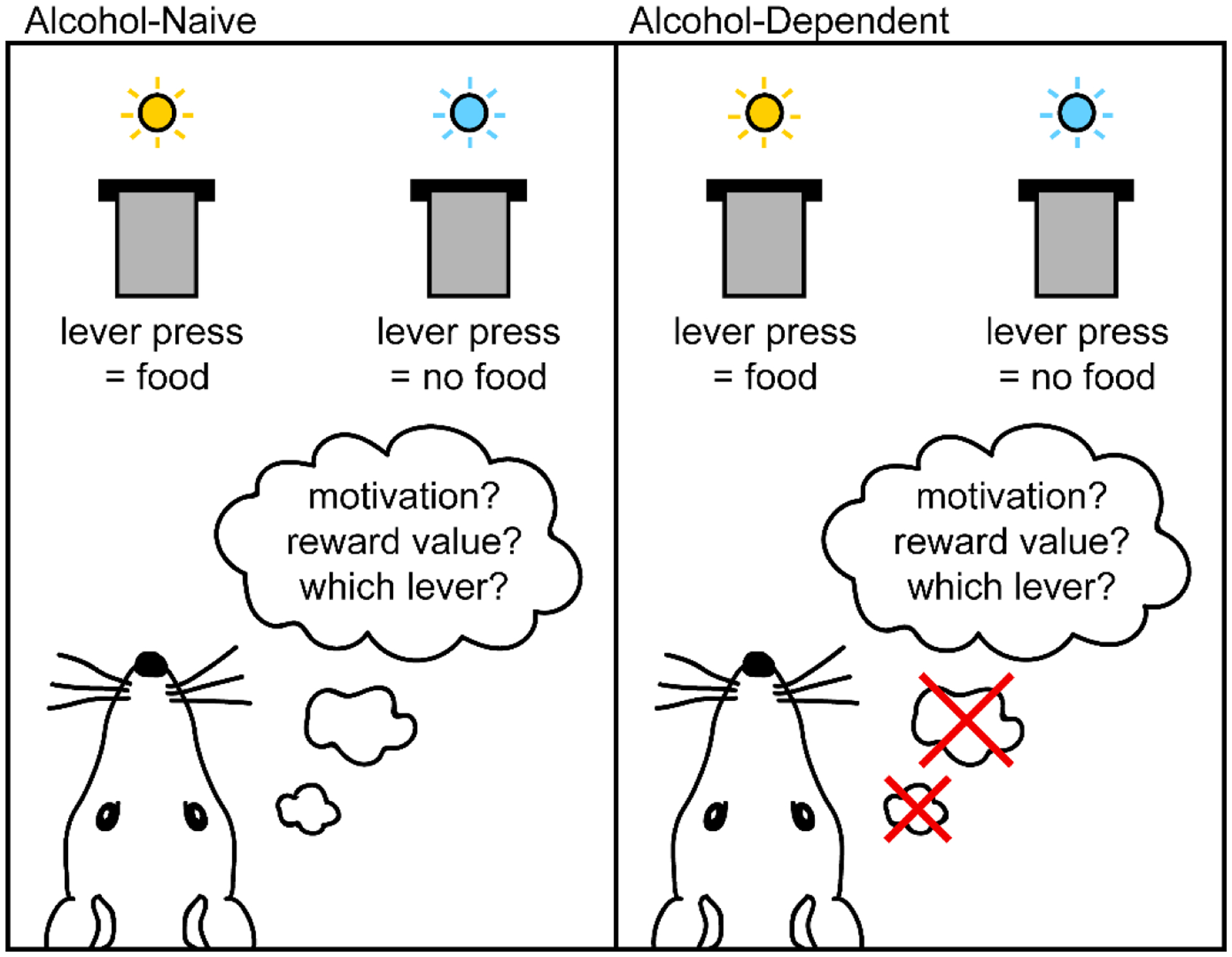Figure 2.

Example of task properties in reversal learning. In this scenario, reward delivery had previously occurred when the right lever was pressed, but has just switched unpredictably such that reward delivery now only occurs when the left lever is pressed. Properties in the task are distinguishable as observable (available through sensory experience) and unobservable (not available through sensory experience). Here, observable properties include both levers and cue lights, and other sensory information in the environment such as visual, auditory, or olfactory contextual cues. Unobservable properties include motivation to perform the task, expected reward value, and representation of task associative structure. Performance on reversal learning tasks relies on such unobservable properties, in particular the ability to infer the change in task structure following reversal of a previously-learned association. We propose that alcohol dependence may disrupt performance in tasks like reversal learning by altering the function of the orbitofrontal cortex, which is thought to be crucial in representing unobservable task properties.
